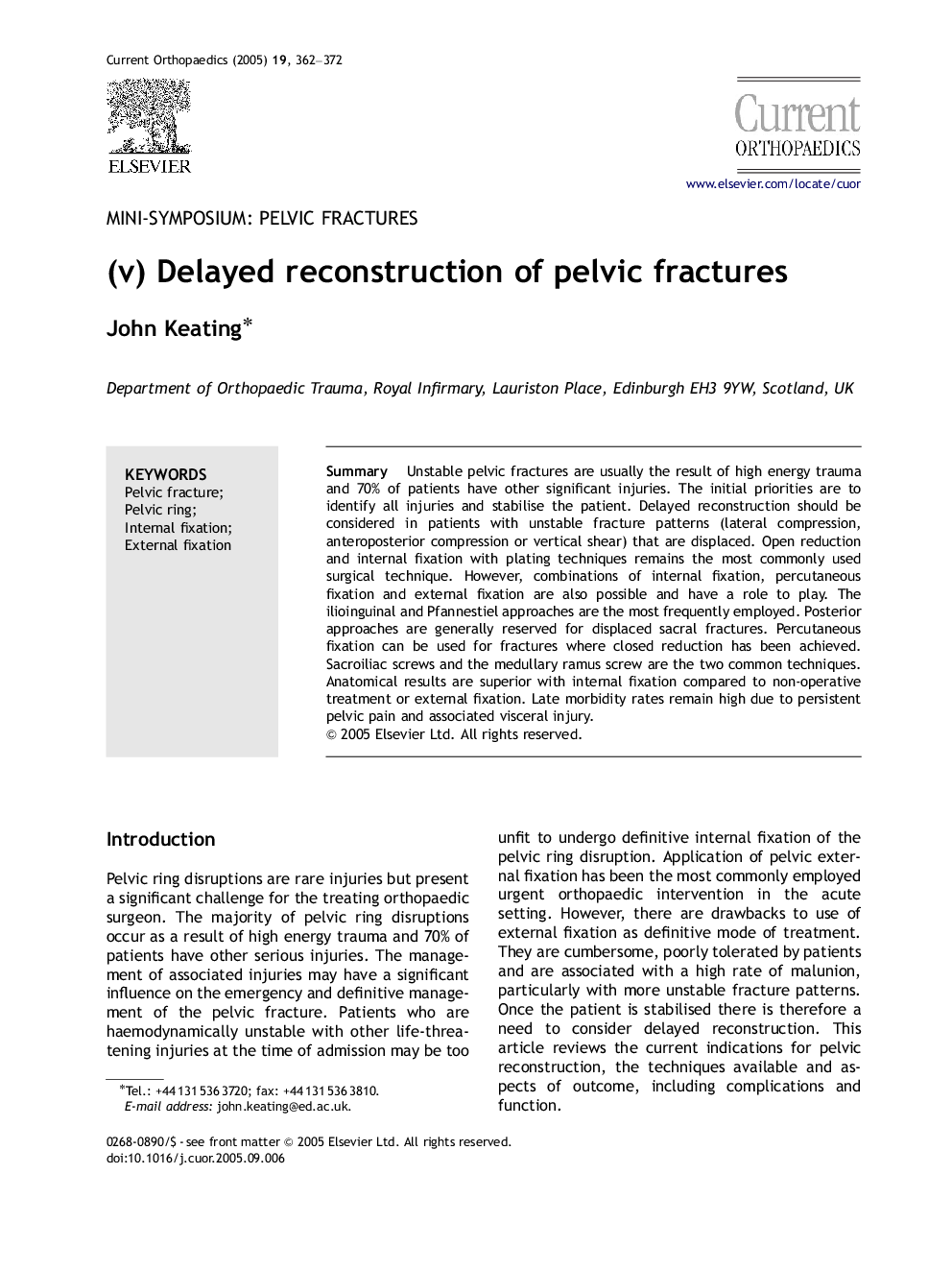| Article ID | Journal | Published Year | Pages | File Type |
|---|---|---|---|---|
| 9351460 | Current Orthopaedics | 2005 | 11 Pages |
Abstract
Unstable pelvic fractures are usually the result of high energy trauma and 70% of patients have other significant injuries. The initial priorities are to identify all injuries and stabilise the patient. Delayed reconstruction should be considered in patients with unstable fracture patterns (lateral compression, anteroposterior compression or vertical shear) that are displaced. Open reduction and internal fixation with plating techniques remains the most commonly used surgical technique. However, combinations of internal fixation, percutaneous fixation and external fixation are also possible and have a role to play. The ilioinguinal and Pfannestiel approaches are the most frequently employed. Posterior approaches are generally reserved for displaced sacral fractures. Percutaneous fixation can be used for fractures where closed reduction has been achieved. Sacroiliac screws and the medullary ramus screw are the two common techniques. Anatomical results are superior with internal fixation compared to non-operative treatment or external fixation. Late morbidity rates remain high due to persistent pelvic pain and associated visceral injury.
Related Topics
Health Sciences
Medicine and Dentistry
Orthopedics, Sports Medicine and Rehabilitation
Authors
John Keating,
